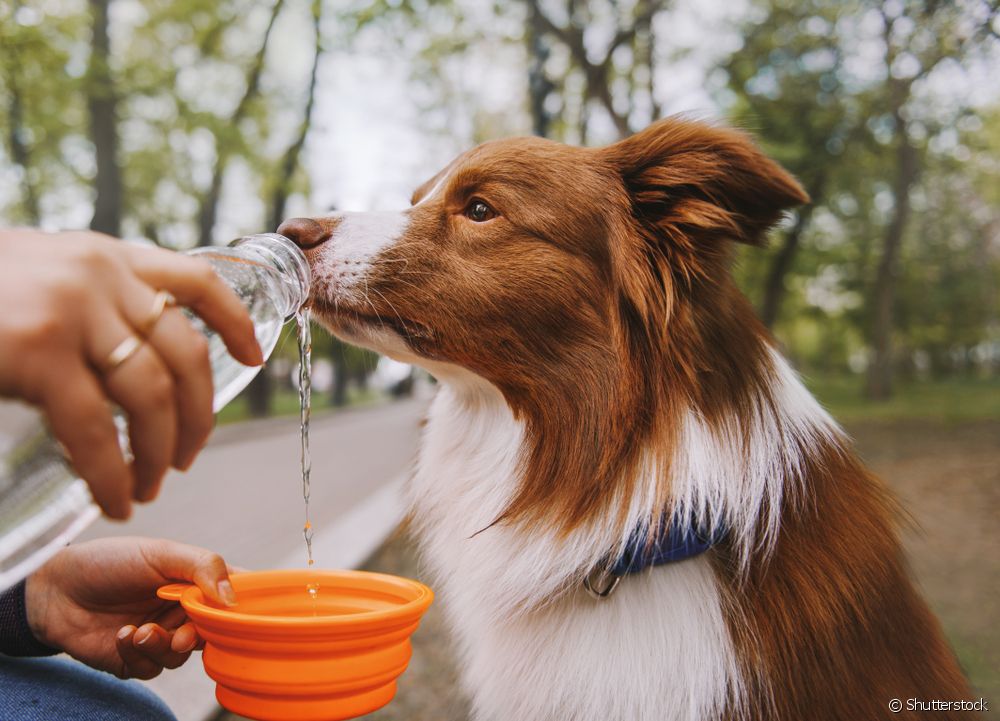Canine anatomy: everything you need to know about the urinary system of dogs

Table of contents
One thing that few guardians look for is information about canine anatomy. Dogs are our best and their bodies have some peculiarities that can make a difference when it comes to caring for the animal. Have you ever wondered how your furry one's urinary system works? This type of knowledge can make a difference when it comes to noticing any problems in the region, such as insufficiencyTo help you, we have prepared a guide with everything you need to know about this part of the canine anatomy.
What is the function of the canine urinary system?
Just like humans, animals need to maintain an adequate concentration of substances and eliminate products that are dispensable to the body. This is the function of the urinary system, a very important set of organs in the canine anatomy. it is through it that the blood is filtered and urine is produced from substances that are considered harmful to the body and must be eliminated. understand about thissystem is important, especially since some diseases can compromise the health of dog.
See_also: Cat claws: anatomy, function and care... everything you need to know about cat clawsCanine anatomy: what are the organs of the urinary system?
The organs of the urinary system are responsible for making and expelling urine from the body. They are: kidneys, bladder, ureters and urethra. See below the function of each of them:
- Kidneys The kidneys are paired organs responsible for filtering the blood, maintaining its ionic balance and eliminating waste products considered harmful to the body through urine. The dog's kidneys are located in the sub-lumbar region - the right kidney has a position partially embedded in the renal impression of the liver.
- Bladder The location of a dog's bladder can vary depending on the amount of urine already produced. Most of the time the bladder is located in the pelvic cavity, but when it is full it expands into the abdominal cavity.
- Ureters These are the tubes that connect the kidneys to the dog's bladder, each of which has an abdominal part and a penile part.
- Urethra The urinary tract is a medium-sized tube used for urine to be expelled.

What health problems can occur in a dog's urinary system?
Dogs are extremely sensitive animals, so they are susceptible to diseases of the urinary tract. Many of them can lead to serious complications. Early diagnosis is the best way to ensure a cure or control of the problem. Here are the main diseases of the canine urinary system:
See_also: English Cocker Spaniel: all about the medium dog breed- Kidney failure in dogs The condition makes it impossible for the pet's kidneys to perform their function of filtering the blood and saving water. In general, the disease is silent. Depending on the stage of the problem, the dog may show vomiting, diarrhea, apathy and fever as signs of the problem.
- Urolithiasis Phosphate stones: popularly called bladder or kidney stones, they occur when stones form in the urinary tract of dogs. There are four types of stones that are more recurrent, namely: phosphate stones, which are usually associated with urinary tract infections; oxalate and urate stones, which are usually due to metabolic changes; and, finally, cystine stones, which are due to hereditary predisposition.Pain during urination and traces of blood in the urine are the most common symptoms of the problem.
- Urinary tract infections Most of the time, they are caused by infections of neighboring organs, so to cure them, it is necessary to identify their causes with clinical examinations.

Dogs with kidney or urinary problems: what precautions should they take to avoid them?
There are several problems that can affect dogs and harm the canine urinary tract. Although some of them have a genetic origin, owners can take some care so that the pet does not suffer from this type of disease. Encouraging water consumption, maintaining hygiene with regular dog bathing and controlling the diet as directed by a veterinarian are the main onesIn addition, allowing the puppy to have access to the place where he pees whenever he needs it is paramount for animal health, as often the habit of holding urine can also lead to problems. A good alternative for pets raised in apartments is the use of the hygienic mat.

